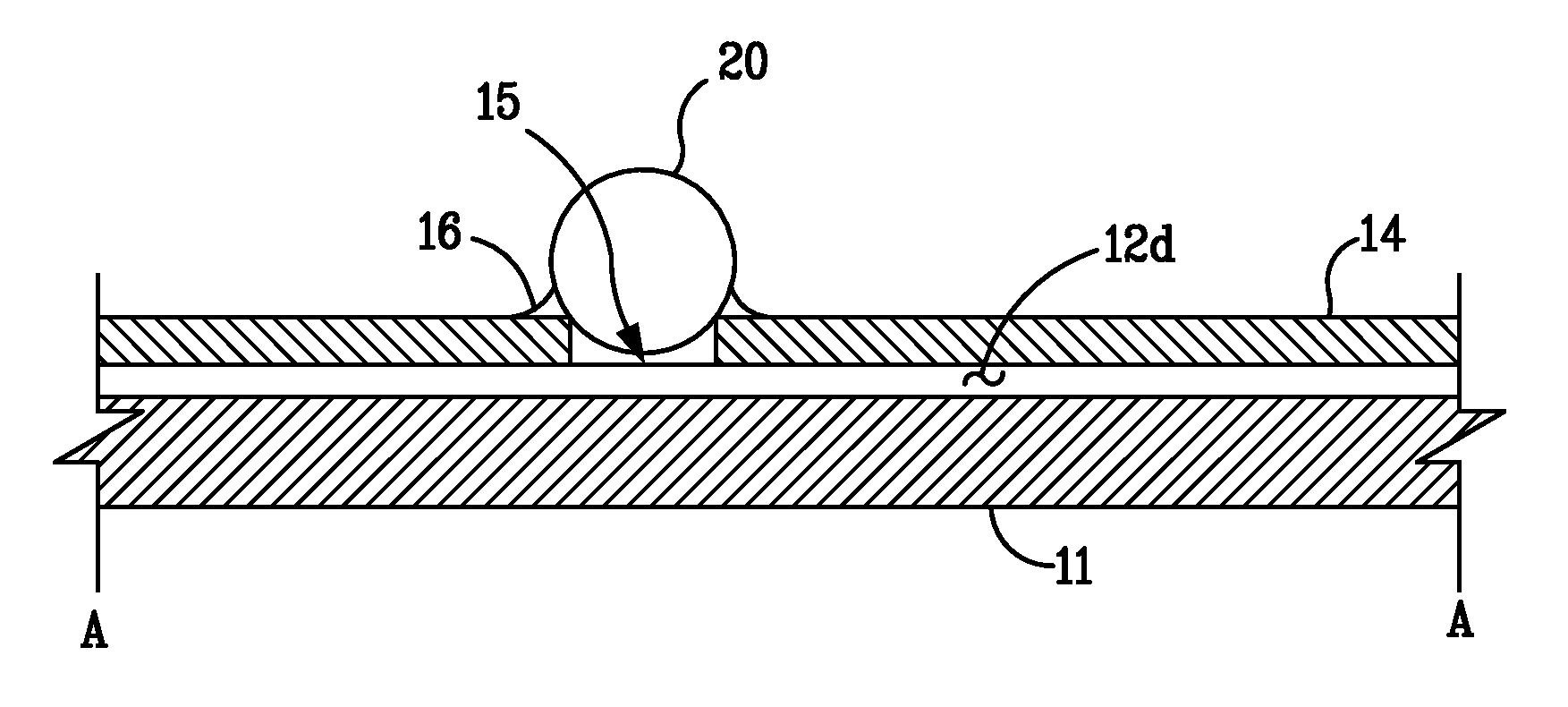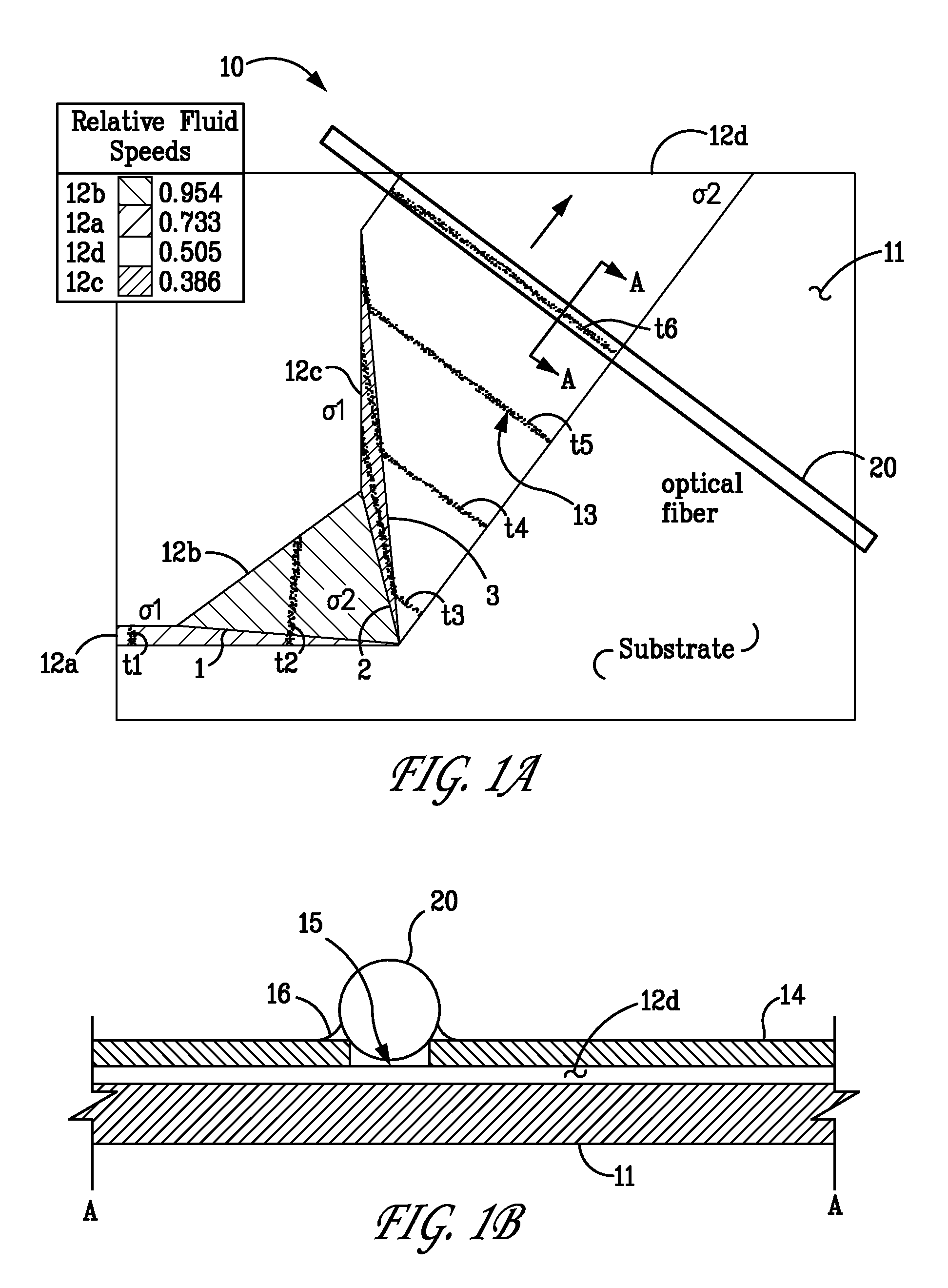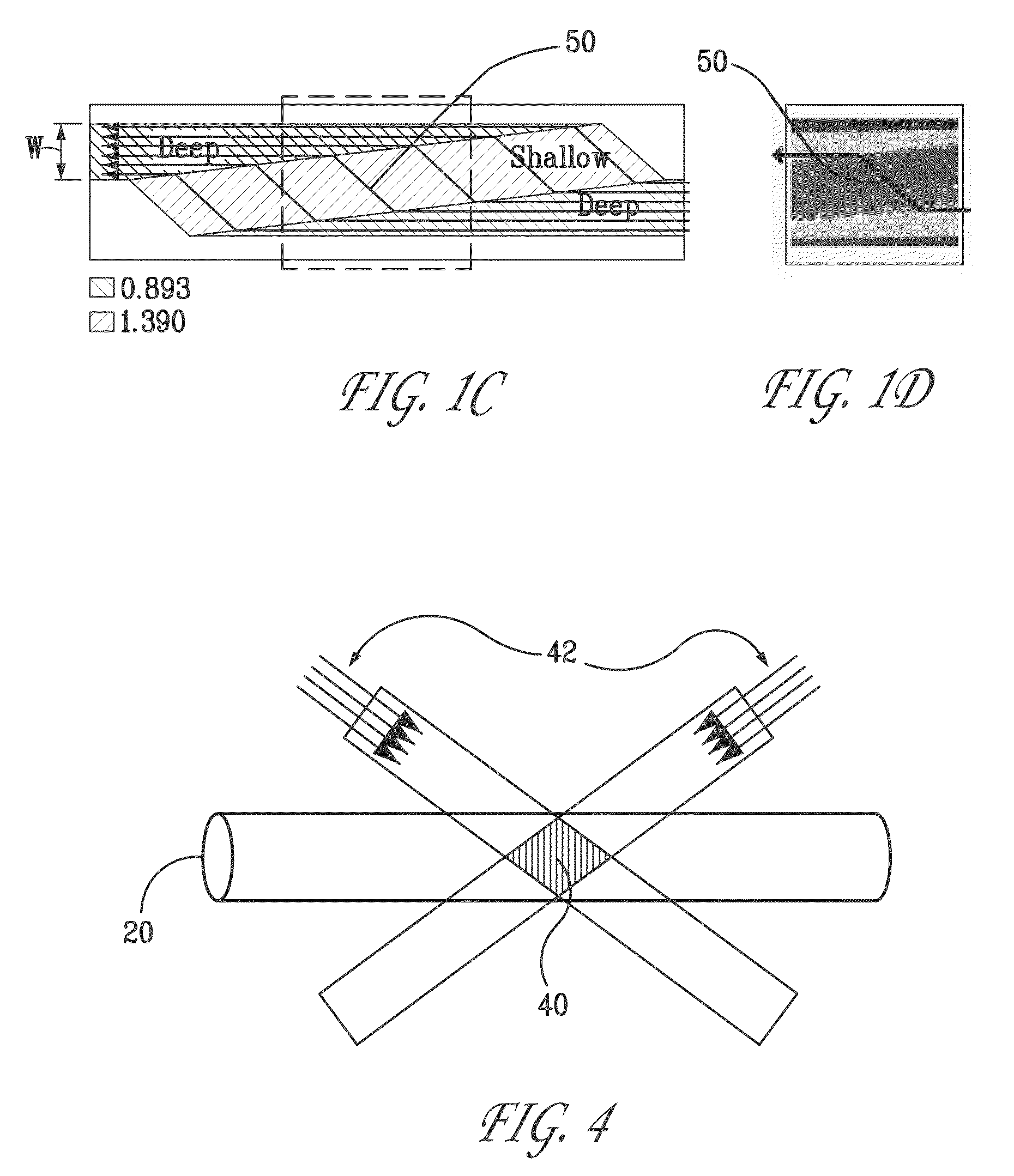Protein detection system
a detection system and protein technology, applied in the field of protein detection systems, can solve the problems of affecting the sensitivity, reliability, and cost of the instrument, placing substantial demands on the physical characteristics (size, weight, power consumption, etc., to achieve the effect of reducing the sensitivity (signal strength) and resolution, reducing the divergence of beams, and reducing the size of the beam
- Summary
- Abstract
- Description
- Claims
- Application Information
AI Technical Summary
Benefits of technology
Problems solved by technology
Method used
Image
Examples
Embodiment Construction
[0021]The low detection limits required for bio-agent sensing necessitate the use of ultra-sensitive detection methods. The most commonly used technique is fluorescent tagging followed by ultraviolet (“UV”) laser-induced fluorescence (“LIF”), which can detect protein concentrations as low as 10−12 M in microfluidic systems. Unfortunately, the time and reagents required for tagging preclude rapid detection or for long-term, unattended operation. In contrast, absorption-based methods offer the possibility of nearly universal detection without the need for labeling. Native protein detection is routinely performed in bench-top instruments using UV absorbance at 214 nm (for detecting the peptide molecule backbone) to 280 nm (for detecting protein side chains such as tryptophan). Moreover, certain specific proteins, such as myoglobin, contain chromophores that enable detection at visible wavelengths. In addition, near-infrared (“NIR”) absorbance is used to detect proteins in complex matri...
PUM
 Login to View More
Login to View More Abstract
Description
Claims
Application Information
 Login to View More
Login to View More - R&D
- Intellectual Property
- Life Sciences
- Materials
- Tech Scout
- Unparalleled Data Quality
- Higher Quality Content
- 60% Fewer Hallucinations
Browse by: Latest US Patents, China's latest patents, Technical Efficacy Thesaurus, Application Domain, Technology Topic, Popular Technical Reports.
© 2025 PatSnap. All rights reserved.Legal|Privacy policy|Modern Slavery Act Transparency Statement|Sitemap|About US| Contact US: help@patsnap.com



